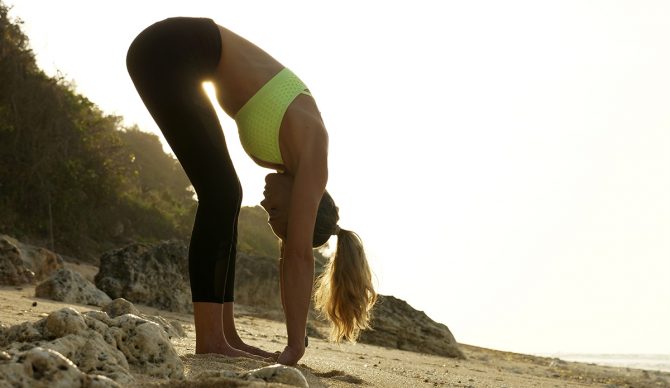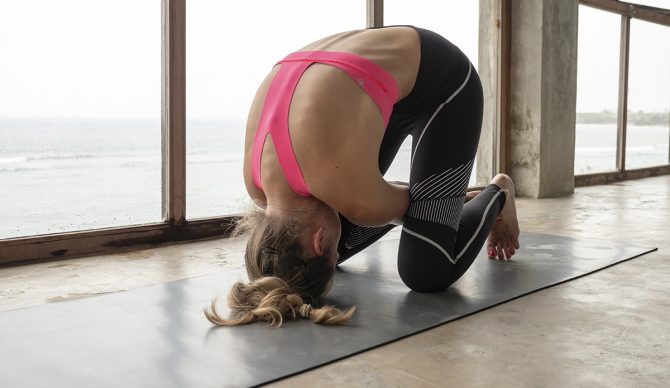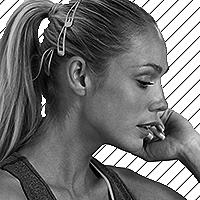
Photo: Yoga15
Do you suffer from neck pain, stiffness in the upper back and shoulders, headaches, and a tingling sensation in your fingers? Do you struggle to turn your head when you wake up in the morning or find yourself twisting your entire body to have a conversation with somebody in the back seat? Chances are you have surfer’s neck, the consequence of many years in the water. The extended hours spent on your board in a prone position puts repetitive strain on the muscles in your neck and upper back. And favouring one side over the other to watch for waves further adds stress to this twisting movement.
What causes surfers neck?
The cervical spine, which is made up of seven vertebrae—C1-7, connects the neck to the upper back. When you’re paddling, your neck is in an extended and raised position which compresses the cervical spine around C5-C6. This puts the muscles that support the cervical spine, including the trapezius and sternocleidomastoid (the muscle that rotates and flexes the neck), into a state of contraction and tension. Over time, this can cause the muscles to spasm, leading to neck and upper back pain. If this isn’t managed, it can eventually lead to small bony projections developing on the cervical joints, which can cause further stiffness and discomfort. To minimise the pain, it’s essential to look after both your muscular and your skeletal health.
How to minimise surfers neck:
We need to look at the muscles and the joints affected, as muscular pain and joint stiffness often go hand-in-hand. Bodywork such as massage and osteopathy can be beneficial, but the pain is likely to return time and time again if the root cause is not addressed. A consistent yoga practice can help with this. It’s a perfect complement to surfing as it is designed to gently strengthen, stretch and balance the body.
Here are some yoga-inspired movements and stretches for you to try:
1. Mobilize the joints in the spine and shoulders before each surf.
Take these movements slowly and carefully—moving in synchrony with your breath.
Seated Cat-Cow:
This is a great warm-up, especially for the thoracic spine. Take it easy at first and gradually increase the movements.
Upper body mobilizations.
These movements loosen up the shoulders, spine, abs, and obliques. Do three to five of each on both sides. If you can’t sit comfortably with your legs crossed, it’s fine to stand or sit in a chair.
2. Stretch tight muscles in the neck and upper back after each surf.

Photo: Yoga15
Hands-Under-Feet Pose
This is a gentle counterpose to the paddling position. Completely relax your neck and think about releasing tension in the lats and shoulders. Bend your knees as much as you need to to protect your lower back. Hold for three to five breaths.

Photo: Yoga15
Side Neck Stretch
Hold for three to five breaths on each side, in and out through your nose. You can change the position of your head, looking up to the sky and down to the ground to move the stretch to different parts of your neck.

Photo: Yoga15
Back Neck Stretch
Hold for three to five breaths on each side, in and out through your nose. Push up against your hands to activate the muscles in your upper back and neck. You can repeat this stretch looking down and to the right, and down and to the left.

Photo: Yoga15
Rabbit
This is a modification of a classic yoga pose. Rest the crown of your head on the mat, reach through and take hold of the insides of your feet. Then pull on your feet to give your upper back and posterior deltoids a deep stretch. Hold for three to five breaths.
Be disciplined with your pre and post-surf routines so that pain is never the reason you have to miss a session.
Editor’s Note: You can find more from the author online here.

